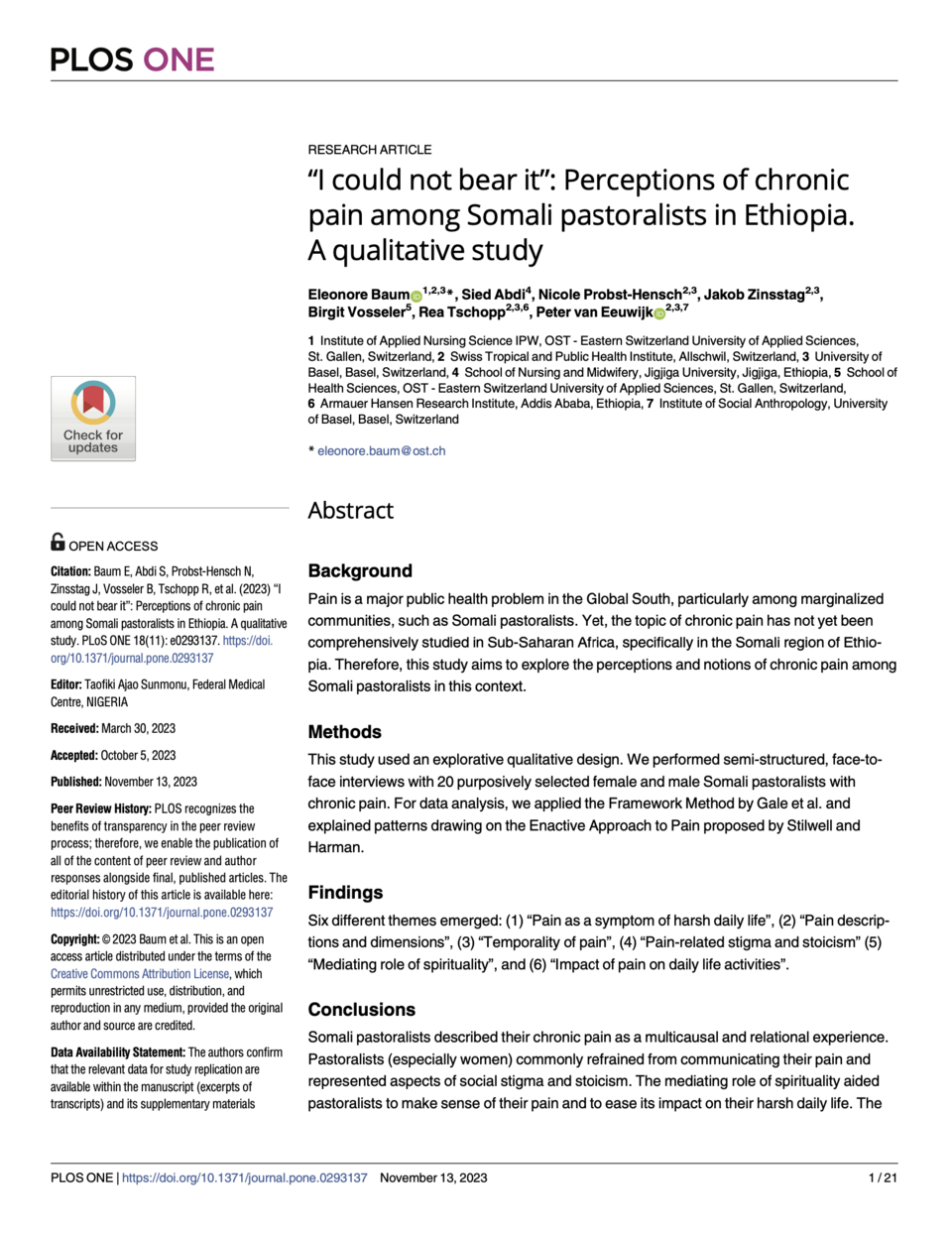Neue Publikationen
/ Forschung
Publication: "'I could not bear it': Perceptions of chronic pain among Somali pastoralists in Ethiopia. A qualitative study"

Jakob Zinsstag and Peter van Eeuwijk are co-authors of an article in the journal PLoS ONE which explores perceptions and notions of chronic pain among Somali pastoralists in Ethiopia.
Background
Pain is a major public health problem in the Global South, particularly among marginalized communities, such as Somali pastoralists. Yet, the topic of chronic pain has not yet been comprehensively studied in Sub-Saharan Africa, specifically in the Somali region of Ethiopia. Therefore, this study aims to explore the perceptions and notions of chronic pain among Somali pastoralists in this context.
Methods
This study used an explorative qualitative design. We performed semi-structured, face-to-face interviews with 20 purposively selected female and male Somali pastoralists with chronic pain. For data analysis, we applied the Framework Method by Gale et al. and explained patterns drawing on the Enactive Approach to Pain proposed by Stilwell and Harman.
Findings
Six different themes emerged: (1) “Pain as a symptom of harsh daily life”, (2) “Pain descriptions and dimensions”, (3) “Temporality of pain”, (4) “Pain-related stigma and stoicism” (5) “Mediating role of spirituality”, and (6) “Impact of pain on daily life activities”.
Conclusions
Somali pastoralists described their chronic pain as a multicausal and relational experience. Pastoralists (especially women) commonly refrained from communicating their pain and represented aspects of social stigma and stoicism. The mediating role of spirituality aided pastoralists to make sense of their pain and to ease its impact on their harsh daily life. The findings of this study can contribute to raise awareness of chronic pain issues among pastoralists. They highlight the need for policymakers to prioritize the improvement of pastoralist-specific pain management. Necessary resources and skills should be available within health care facilities. Pain management should be accessible, affordable and culturally acceptable for this population.
